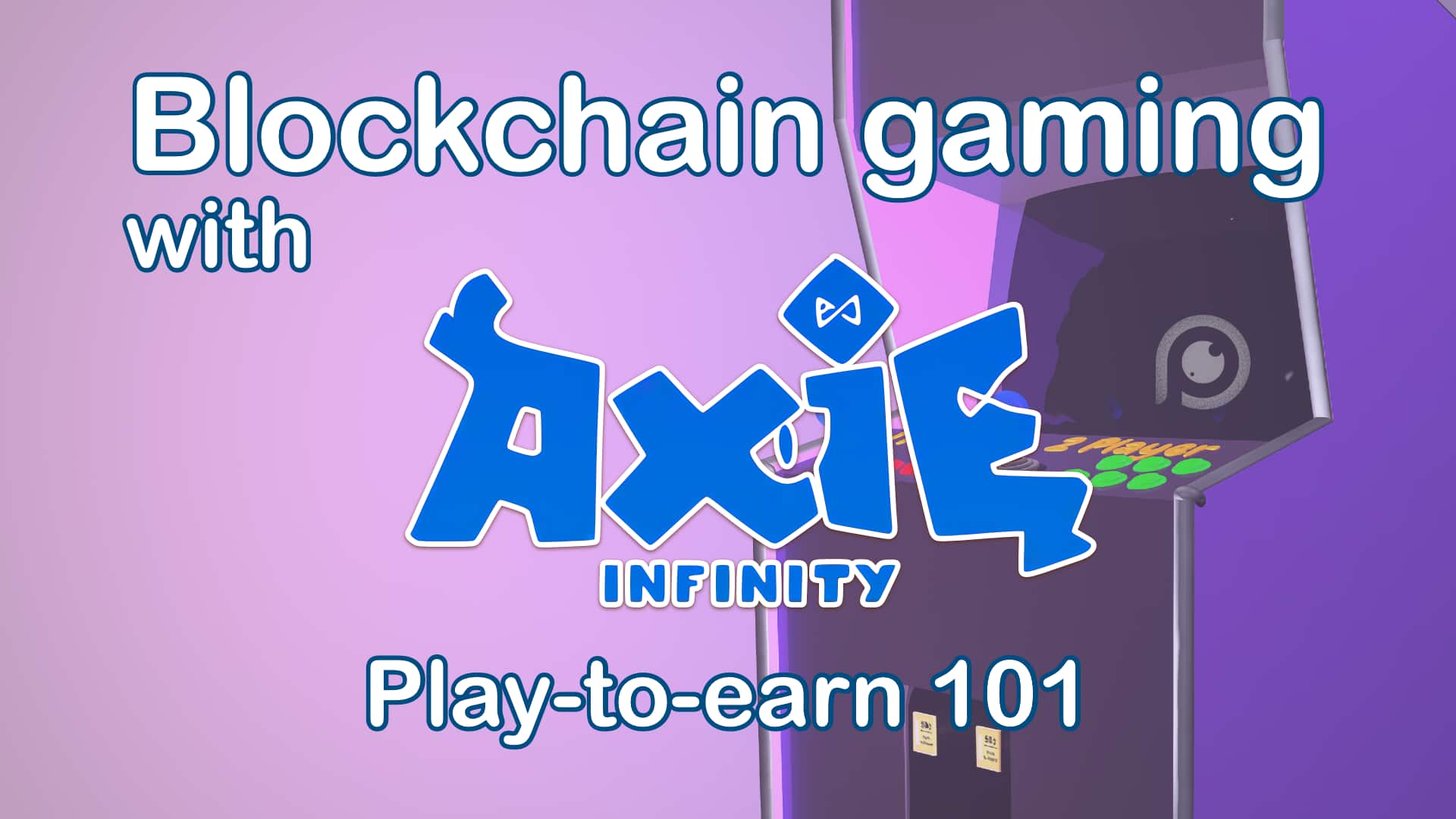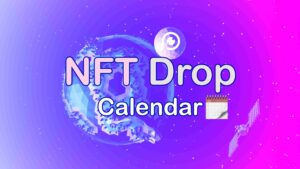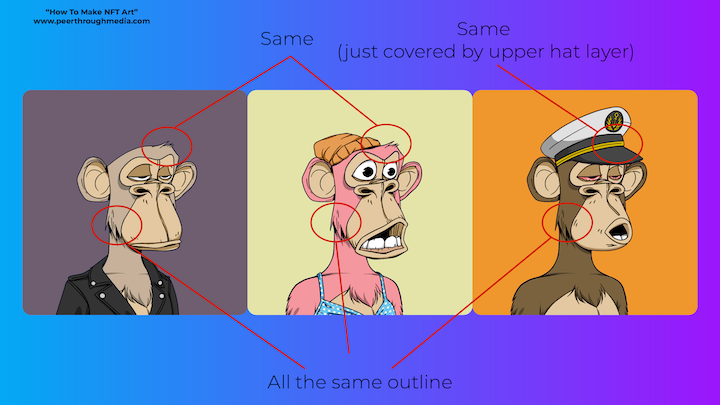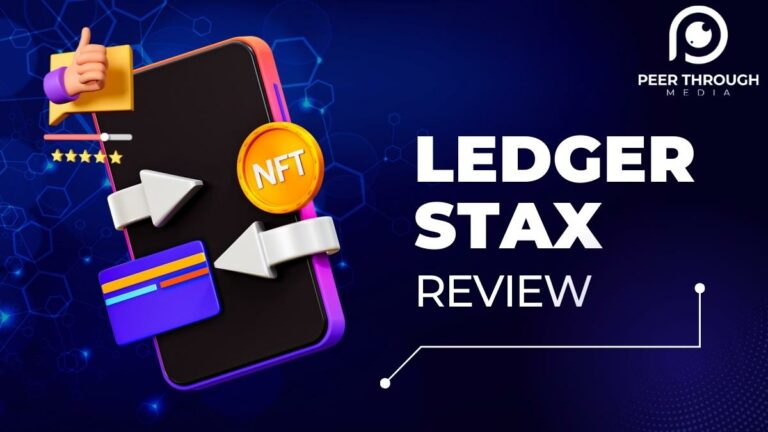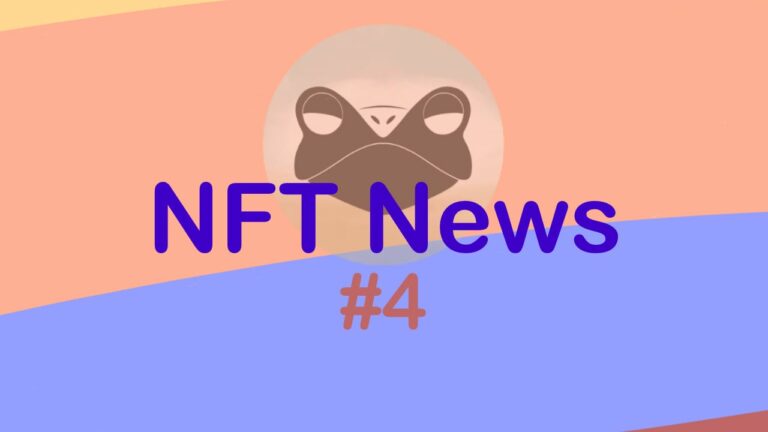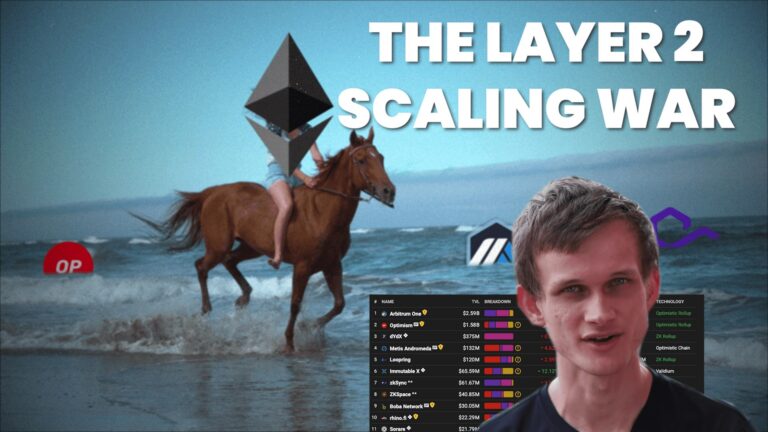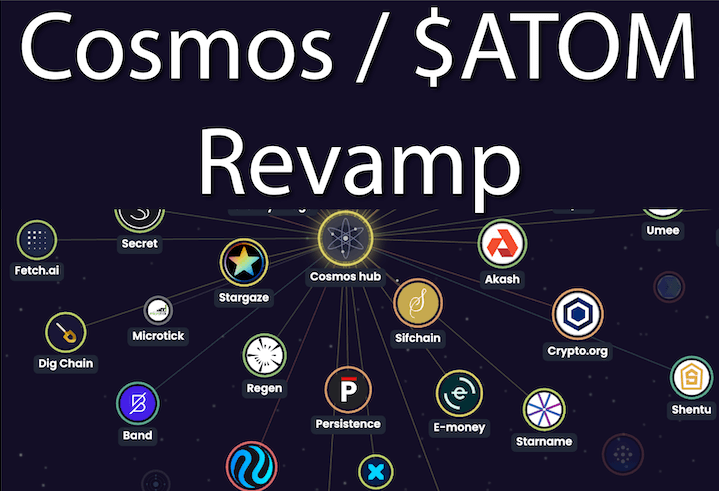NFT Gaming with Axie Infinity: How to play and win
Axie Infinity is a game created by Sky Mavis that lets players earn real-life money through gameplay. It is currently the most popular entry in the emerging Play-to-earn (P2E) gaming model. Players collect and battle with Pokémon-like creatures, called Axies, in order to earn tokens, (SLP & AXS) with cash value.
Axies are ERC-721 non-fungible tokens (NFTs), which are unique digital collectibles that can be bought and sold with real money. Players breed Axies to battle and sell. To date, Axie Infinity has hosted 4.88 million NFT transactions, which have generated over $2 billion in sales. In August, Axie Infinity’s collection generated more than $765 million in sales, representing about 83% of the total volume of gaming NFT sales.
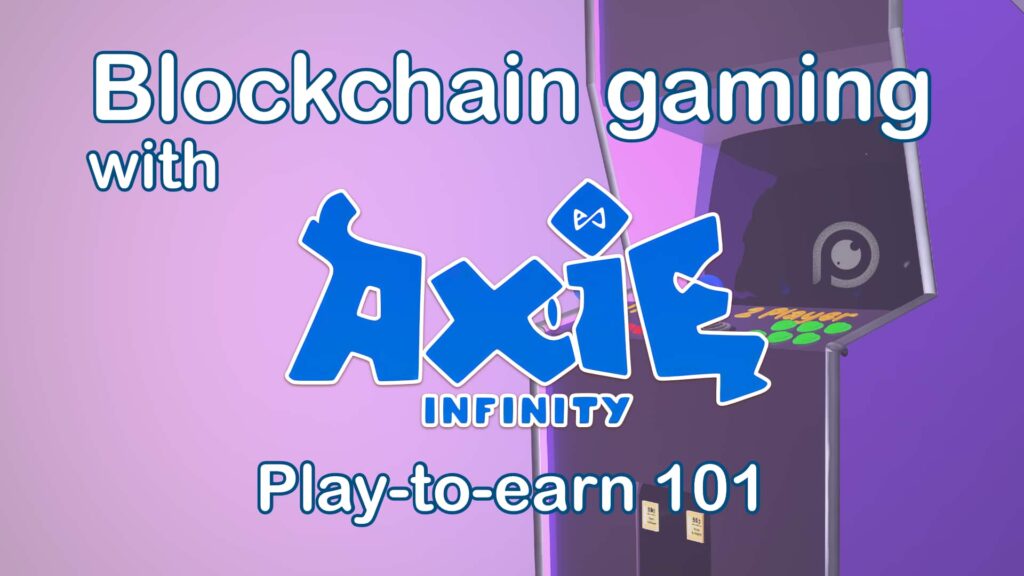
Following the NFT gaming hype
Over the past year, non-fungible tokens (NFTs) have taken the world by storm. The term “non-fungible” means that each NFT is unique and cannot be replaced. NFT ownership is recorded and verified on public blockchains (currently, the Ethereum blockchain is the most popular). Because ownership is publicly verifiable, digital goods can be monetized in a way that wasn’t possible in the past.
Previously, a file could be copied an infinite number of times, and there would be no way of determining which was the original. While digital goods can still be copied, blockchains allow originals to be identified, bought, and sold. In other words, NFTs recreate scarcity in the digital world, resulting in the perceived increase in value of a digital object, which could be readily multiplied by simple copy-pasting.
“Okay, but why would you want to spend money on the original when you can right-click-save for free?” Probably the best comparison is the art world. Anyone can get a cheap printout of the Mona Lisa, but only one person can own the original. There’s a much greater sense of prestige associated with owning the original, and some find this to be powerfully appealing.
By making Axies NFTs, players can assume ownership of them in a way that would have been impossible otherwise. And if they can be owned, they can be traded.
The growth of blockchain games
NFT gaming is rapidly growing in popularity. Gaming has always existed on the bleeding edge of technology, and blockchain technology is no different. Immutable recently raised $60M for an NFT games platform on Ethereum:
“The most exciting thing by far is the interest from the massive game companies,” said Ferguson. “They say they have an NFT strategy that has been accelerated by three or four years. We see all of the major game studios around the world have dedicated teams to work out what their NFT strategy is, and some are building defensive strategies. We’re going in aggressively and saying we can be the market leader in NFT experiences for gamers.”
Gaming is particularly well-positioned for NFT adoption. Gamers are already accustomed to spending real-world money on digital goods. Before cash shops, online gamers would often engage in real-world trading (RWT), spending real money outside of official channels to gain rare items and goods. Since then, game developers have supplemented their games with paid upgrades, costumes, and expansion packs. A new shift is underway. Now, instead of players buying all digital goods from the game developers, they can create their own digital goods and sell them to each other.
Where can you play Axie Infinity?
Axie Infinity can be found here. As a web3 app, Axie Infinity is hosted on the Ethereum blockchain, but the game development team is also building a high-speed side-chain solution called Ronin. The makers of Axie Infinity, Sky Mavis, currently maintain centralized control of the game, but in the whitepaper, they state that they intend to switch to a decentralized decision-making process in 2023, with AXS holders voting on decisions.
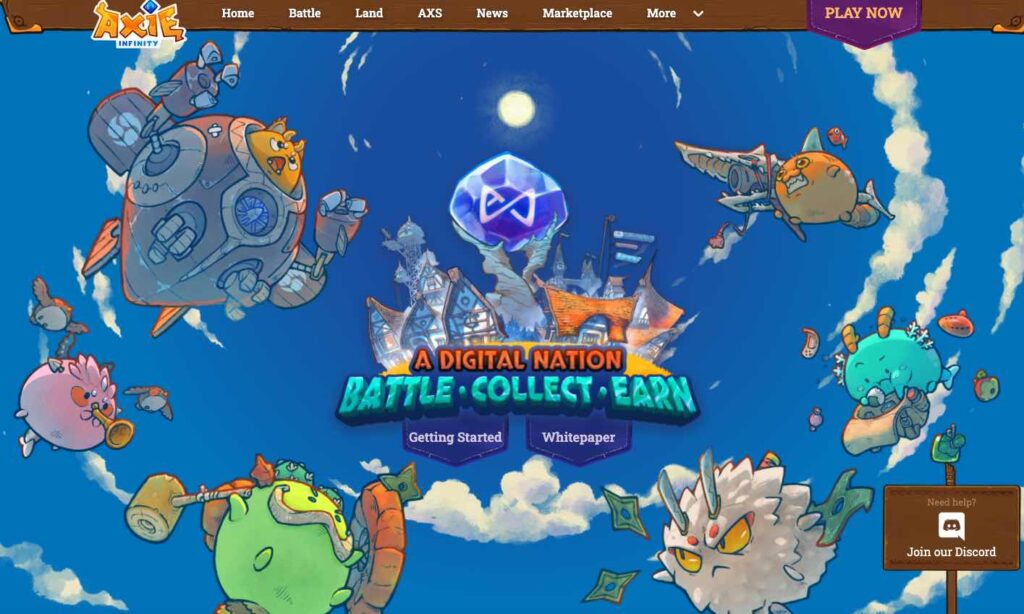
Getting started with Axie Infinity
For many players, the largest obstacle is the Axie requirement. Prices fluctuate wildly over time, but at the time of this writing, buying 3 Axies cost approximately $400. The price has surged due to massively increased demand, particularly from the Philippines. While players can earn that back over time, it’s still a steep up-front investment, especially for people in low-income countries. To address this problem, the developer team organized “scholarships” by leasing Axies to new players in exchange for a percentage of their daily earnings. Some players now have hundreds of “scholars” borrowing their Axies and paying accordingly.
The initial setup is, honestly, pretty complicated. It’s telling that the game is so popular despite erecting so many barriers to entry, but here is a brief summary:
- Download a digital wallet like Metamask and fill it with enough ETH to buy 3 Axies.
- Download the Ronin wallet.
- Transfer the ETH to Ronin using the Ronin bridge.
- Buy at least 3 Axies from the Axie marketplace.
- Create your Axie account by logging in with your Metamask here.
- Download the game here.
- Play the game!
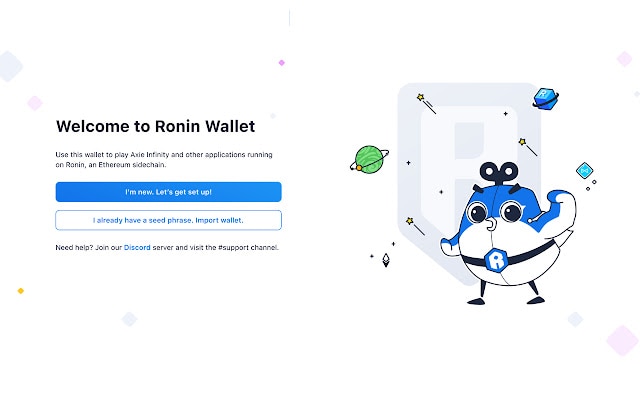
Play-to-earn basics
Axie Infinity is a battle game in which users battle their Axies in real time. The turn-based battle system is a card game in which the goal is to eliminate all of the enemies your team of 3 Axies is confronting. Each turn, the player must carefully play cards that maximize their chance of winning.
In addition to quests, PVP, and Adventure Mode, Axies can be bred to make potentially powerful and rare combinations of traits. Axies can only be bred a maximum of seven times, in order to limit the Axie population. Breeding costs 4 AXS and an amount of SLPs – an amount which increases with each generation. The traits of the new Axie are influenced by the traits of the parents, though there is an element of randomness to this process.
Collectibles in the form of gameplay rewards
Each Axie has four unique statistics: Health, Morale, Skill, and Speed. Each of these has an important role in determining Axie’s combat mechanics, since they can influence the amount of damage the Axie takes, which Axie attacks first, the damage dealt, and so on.
There are six normal classes of Axie to choose from (Reptile, Beast, Plant, Bug, Aquatic, or Bird) and three secret classes (Mech, Dawn, or Dusk). yDifferent classes have different strengths and weaknesses that influence the Axie’s stats. For instance, a Bird card used to attack a Beast Axie will inflict 15% bonus damage. On top of this, when an Axie uses a card from its class, it receives a 10% bonus to attack or shield. So a Bug Axie would receive 10% more attack/shield from a Bug card. These boosts stack – if a Bird Axie used a Bird card against a Beast Axie, it would deal 25% more damage.
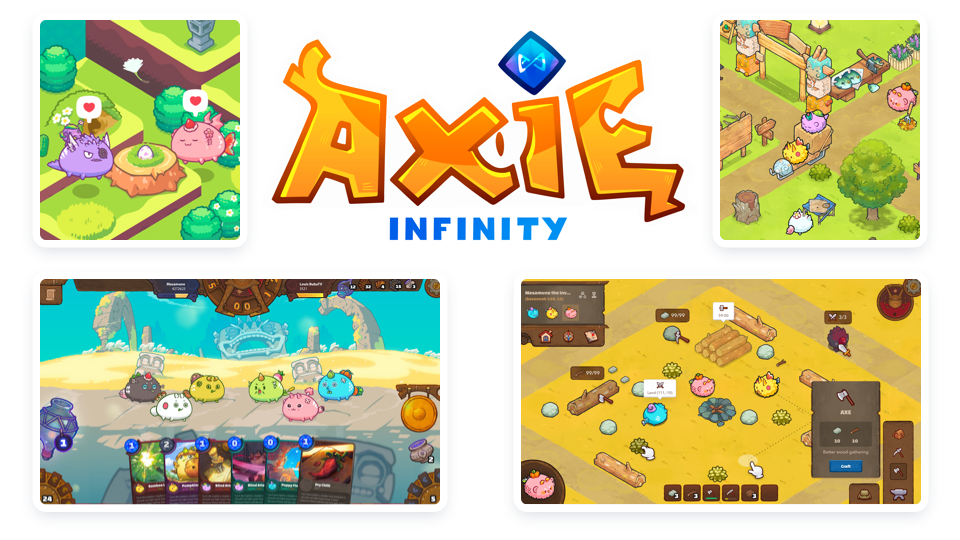
Axies have six body parts: ears, eyes, horns, mouth, back, and tail. Each of these has a bonus associated with them (except for eyes and ears). The bonuses of an Axie depend on a class each part has – each part has a total bonus of 4 ( so 6 parts x 4 stats bonus), which gives a total of 164 points in stats distribution to each Axie. Each body part has three genes associated with it: one dominant (D), one recessive (R1), and one minor recessive (R2) gene. Dominant genes have a 37.5% chance of being passed down to any offspring, whereas this drops to 9.375% for recessive genes, and 3.125% for minor recessive genes.
Based on their overall abilities, Axies are often divided into two groups. Defenders are highly skilled at absorbing damage and have at least a few high shield cards. Attackers sacrifice durability in exchange for more damage output.
In addition to these standard Axies, there are a few rare Axies with Mystic parts. These Axies were only created during the original pre-sale. These are incredibly expensive – the most expensive mystic ever sold went for 300 ETH.
AXS: The Axies’ Crypto Coin
The Axie protocol produces revenue by taking a 4.25% fee when players buy and sell Axie NFTs in its marketplace, and by charging fees for breeding Axies to create new ones in the form of its tokens, Axie Infinity Shards (AXS) and Smooth Love Potion (SLP). AXS and SLP are denominated in ETH. AXS has skyrocketed from a price of ~$0.5 at the beginning of 2021 to $65.88 at the time of this writing – an example of the elusive and coveted 100x return. SLP has also increased in price, though not to the same extent. AXS has additional significance as a governance token – as Axie Infinity transitions to more decentralized decision-making, AXS holders will be able to cast votes. AXS token holders will soon be able to stake their tokens to receive regular rewards, though AXS holders will also need to vote and play to claim their rewards.
However, players don’t actually need to play Axies to obtain AXS. Would-be players can buy the coins as a cryptocurrency directly and track its market fluctuations on sites like CoinGecko.com.
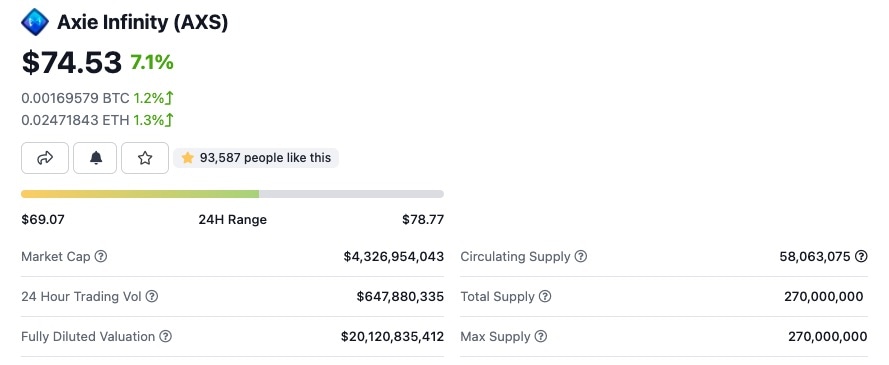
Earning on the blockchain
Axie Infinity can be deceptively complex; the players that earn the most rewards have spent a lot of time cultivating their skills. A great deal of strategy goes into optimal performance. Since there’s real money on the line, many Axie players take their gaming seriously. Countless gaming guides have sprouted on the internet; one of the more popular is AxieWorld.com. I’d highly recommend the use of online resources to maximize your chances of success.
NFT gaming is not perfect
One issue comes to mind when exploring NFT gaming: Axie’s business model depends upon continuous growth. So far, Axie Infinity has enjoyed enviable growth, but how long will that continue? As David Phelps puts it:
For the expected returns of financialized games are inevitably negative: as McCormick details, 95% of Axie’s revenue goes to players, which sounds good in theory, but also means that overall players are losing 5% of the money they put in. Axie is, ultimately, the casino, and playing its game is betting against the house. Axie’s Ponzi strategy ensures that’s not a problem, as long as new players continue to enter the ecosystem, subsidizing older ones well beyond their investment while driving up the fiat-value of the Axie currency in the meantime. (Breeding is one way to ensure this.) But what will happen when they stop entering?
Players will, on average, lose money. However, this loss will not be evenly distributed. Skilled players will make back everything they spend (and then some), while less skilled players will fail to recoup their initial investment
Conclusion: the future of Axie Infinity and the genre of blockchain games
Axie Infinity is at the helm of a new play-to-earn paradigm in gaming. A startling implication of the P2E model is that it has the potential to set a kind of global minimum wage for those with internet access. Most players earn between $300 and $1,500 per month. That may not sound like much in Western countries, but that can be a life-changing income boost for the 60% of Axie Infinity players who live in the Philippines. Many players in both the Philippines and Vietnam have decided to make a better living for themselves playing Axie Infinity every day.
Axie’s success has illustrated another fact: that games are likely the easiest way to onboard people into crypto. By providing a clear (if time-consuming) set of instructions on wallet creation and usage, and leading users to a fun, low-stress game, Sky Mavis has helped to demystify crypto for regular people. While users may not fully recoup their initial investment, it’s worth pointing out that most games are not free, and most games definitely don’t pay their players. Spending (or “losing”) money on a game is the default, and players earning “only” 95% of the revenue is still a massive improvement over the old standard, 0%.
There is still much to learn about the future of web3 gaming (for instance, how does having financial “skin in the game” influence player communities?) But one thing is for certain: gaming will never be the same again.

